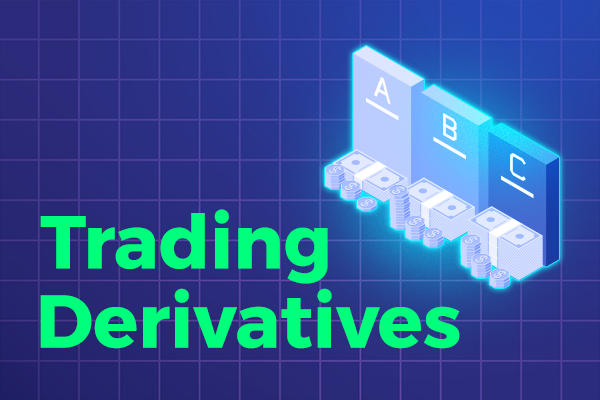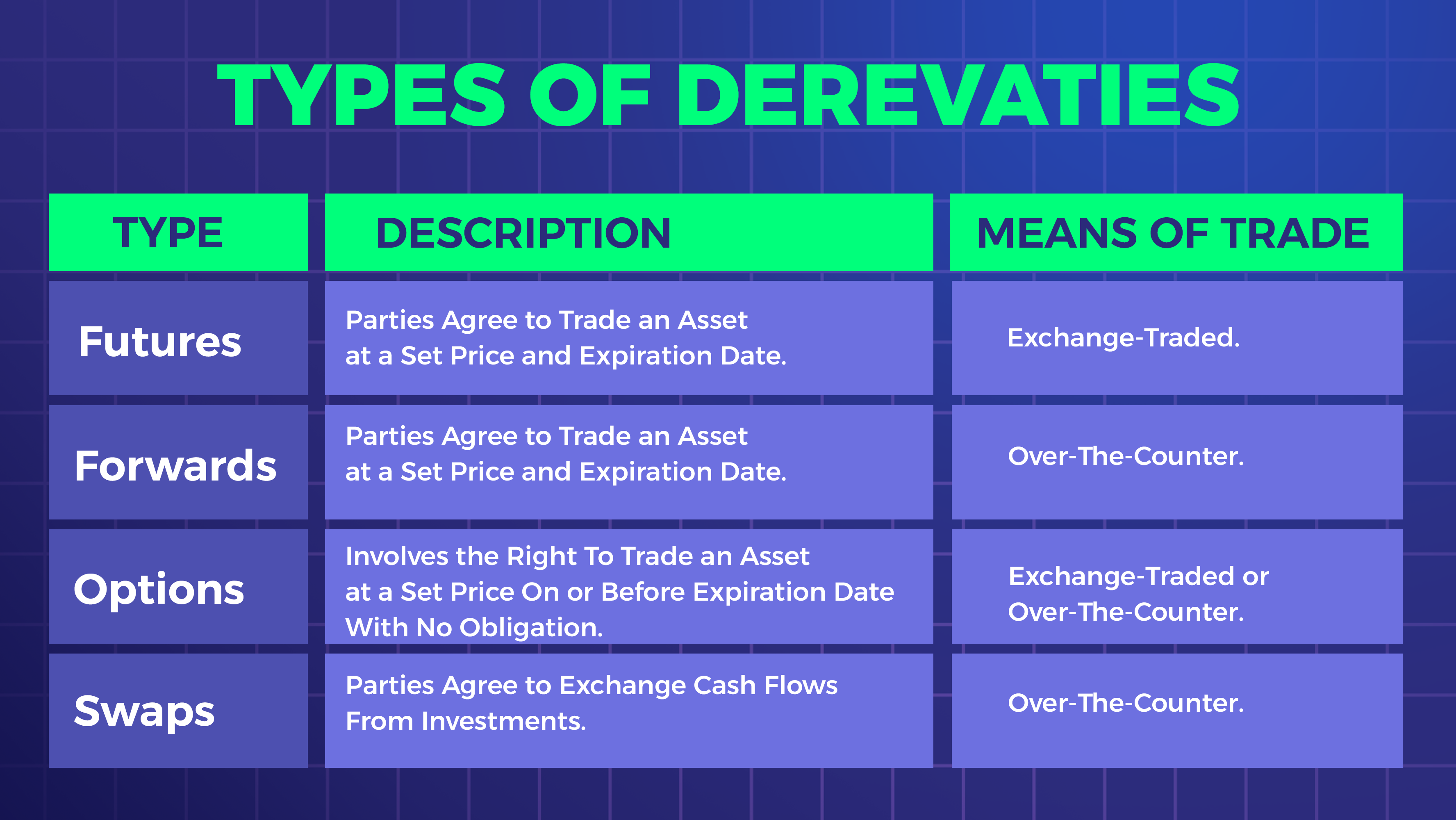If you’re an investor looking to expand your portfolio and take on more risk, derivatives may be an option worth considering. However, with the potential for high returns comes a higher degree of risk.
Derivatives are complex financial instruments that can be difficult to navigate without a solid understanding of their intricacies. In this guide, we’ll explore the risks associated with derivatives and provide valuable insights to help you make informed investment decisions.
From understanding the different types of derivatives, to assessing counterparty risk, we’ll cover the essentials you need to know to navigate this complex landscape.
Whether you’re a seasoned investor or just starting out, this guide will provide you with the knowledge and tools necessary to confidently manage the risks associated with derivatives and make informed investment decisions.
So, let’s dive in and explore the world of derivatives together!
Types of Derivatives and Their Risks
Derivatives are financial instruments whose value is derived from an underlying asset, such as a stock, bond, or commodity.
There are several types of derivatives, including futures contracts, options contracts, swaps, and forwards. Each one has its own unique set of risks.
Futures contracts are agreements to buy or sell an asset at a predetermined price and date in the future. They are commonly used by investors to hedge against price fluctuations of an underlying asset. However, futures contracts can also be used for speculative purposes, which can lead to significant losses.
Options contracts give the holder the right, but not the obligation, to buy or sell an asset at a predetermined price and date in the future. They are commonly used by investors to hedge against price fluctuations or to speculate on the direction of an underlying asset.
However, options contracts can also be risky, as the value of the option can decline rapidly if the underlying asset moves in the opposite direction of the investor’s expectations.
Swaps are agreements between two parties to exchange cash flows based on an underlying asset. They are commonly used to manage interest rate risk, currency risk, and credit risk.
However, swaps can also be risky, as the counterparty may default on their obligations, leading to significant losses.
Forwards are similar to futures contracts, but they are not standardized and are traded over-the-counter. They are commonly used by investors to hedge against price fluctuations of an underlying asset. However, forwards can also be risky, as they are not regulated and may not be easily tradable.
Understanding the risks associated with each type of derivative is crucial for successful investing in this complex market.
Benefits of Investing in Derivatives
Despite the risks associated with derivatives, there are several benefits to investing in them. Derivatives can provide investors with exposure to a wide range of assets, including commodities, currencies, and interest rates.
They can also be used to hedge against price fluctuations, manage risk, and generate income.
One of the biggest advantages of derivatives is their leverage. Derivatives allow investors to control a large amount of assets with a relatively small investment. This can lead to significant returns if the investment is successful. However, leverage can also magnify losses, making it important for investors to carefully manage their risk.
Another advantage of derivatives is their flexibility. Derivatives can be tailored to meet the specific needs of investors, allowing them to create custom investment strategies that meet their individual risk tolerance and investment goals.
Understanding the Market and the Risks Involved
Before investing in derivatives, it’s important to understand the market and the risks involved. The derivatives market is complex and constantly evolving, with new products and strategies being developed all the time. It’s important for investors to stay up-to-date on the latest trends and developments in the market.
One of the biggest risks associated with derivatives is counterparty risk. Counterparty risk refers to the risk that the other party to a derivative contract will default on their obligations. This can lead to significant losses for investors.
Another risk associated with derivatives is market risk. Market risk refers to the risk that the value of the underlying asset will decline, leading to a decrease in the value of the derivative. This risk can be mitigated through careful analysis and risk management strategies.
It’s also important to consider the regulatory framework surrounding derivatives trading. Derivatives are often subject to strict regulations, which can vary by country and by type of derivative. It’s important for investors to understand these regulations and comply with them to avoid penalties and legal issues.
Risk Management Strategies for Derivatives
Effective risk management is crucial for successful investing in derivatives. There are several risk management strategies that investors can use to minimize their exposure to risk.
One strategy is diversification. Diversification involves investing in a variety of different assets to reduce the risk of loss. By spreading their investments across different types of derivatives and underlying assets, investors can reduce their exposure to any one particular risk.
Another strategy is hedging. Hedging involves using derivatives to offset the risks associated with other investments. For example, an investor who owns stock in a particular company may use options contracts to hedge against a decline in the value of the stock.
Stop-loss orders are another popular risk management strategy. Stop-loss orders are instructions to sell a derivative if it falls below a certain price. This can help investors limit their losses if the value of the derivative declines rapidly.
Regulatory Frameworks for Derivatives Trading
Derivatives trading is often subject to strict regulations, which can vary by country and by type of derivative. In the United States, for example, derivatives trading is regulated by the Commodity Futures Trading Commission (CFTC) and the Securities and Exchange Commission (SEC).
Regulations typically address issues such as transparency, reporting, and risk management. It’s important for investors to understand these regulations and comply with them to avoid penalties and legal issues.
Key Considerations for Investing in Derivatives
Before investing in derivatives, it’s important to carefully consider a number of key factors. These include:
1- Understanding the risks associated with different types of derivative
2 – Assessing counterparty risk
3- Developing a risk management strategy
4- Staying up-to-date on market trends and developments
5- Complying with regulatory frameworks
Investors should also carefully evaluate the potential returns and risks associated with derivatives before making any investment decisions.
Common Mistakes to Avoid When Investing in Derivatives
Investing in derivatives can be complex and risky. To avoid costly mistakes, investors should be aware of common pitfalls and mistakes to avoid. These include:
1- Failing to understand the risks associated with different types of derivatives
2- Failing to adequately assess counterparty risk
3- Failing to develop a risk management strategy
4- Failing to stay up-to-date on market trends and developments
5- Failing to comply with regulatory frameworks
By avoiding these common mistakes, investors can increase their chances of success in the complex world of derivatives investing.
Derivatives Trading Platforms and Tools
There are a variety of derivatives trading platforms and tools available to investors. These platforms and tools can provide valuable insights and analysis to help investors make informed investment decisions.
Some popular derivatives trading platforms include CME Group, Eurex, and ICE Futures. These platforms offer a wide range of derivatives products and services, as well as real-time market data and analysis.
Other popular tools for derivatives investing include risk management software, trading algorithms, and financial news and analysis services.
Conclusion: Making Informed Decisions in Derivatives Investing
Derivatives can be a valuable addition to any investor’s portfolio, but they are also complex and risky. To successfully navigate this landscape, investors need to have a solid understanding of the risks associated with different types of derivatives, as well as the regulatory frameworks and risk management strategies that apply.
By carefully evaluating the potential risks and rewards of derivatives investing, and by using the tools and platforms available to them, investors can make informed investment decisions and increase their chances of success.



